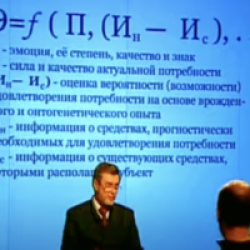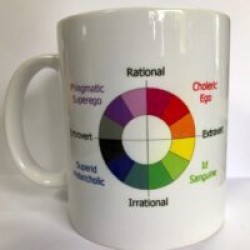In this article I would like to explain TPE- subtype system and to answer questions:
What is a subtype? What kinds of subtypes exist? How to assign the subtype to any particular type?
What is a subtype?
In TPE-system under the subtype is implied psychological type, which serves as a compensation to the main type. The subtype is distinguished at three levels: TPE –subtype, TIM – subtype and functional subtype.
TPE – subtype
At the group level each of the 16 types belongs to one of the 4 groups of types associated with the type of psychic energy (TPE): Id, Ego, Superid and Superego. For example, LII is a one of the Superego -types (LII, LSI, ESI,EII) which belong to TPE Superego.
Each Superego – type can be assigned a TPE-profile based on distribution of psychic energy from high to low:
1) Superego – Id – Ego – Superid
2) Superego – Id – Superid – Ego
3) Superego – Ego – Id – Superid
4) Superego – Ego – Superid- Id
5) Superego –Superid- Id – Ego
6) Superego –Superid- Ego – Id
There are 6 possible TPE profiles for each of the 4 groups which make 24 profiles all in all. The TPE profile is an analogy to the temperament profile: sanguine –choleric – phlegmatic- melancholic. Temperament and psychological type are associated with psychophysiology and innate properties of the psyche. When I refer to psychological type I mean both: the type of psychic energy (4 types) and the type of informational metabolism (16 types).
Superego – Id – Ego – Superid
The last two energies in the profile are considered to be low and the first two as strong and competing for power within the psyche. The two major energies play a crucial role in psychodynamics by balancing each other and creating psychological stability. That is why in assigning the subtype I use not 24 but only 6 psychodynamics profile for all of the 4 TPE groups (groups divided by the type of psychic energy).
Extraverted profile: Ego – Id and Id – Ego.
Introverted profile: Superego-Superid and Superid-Superego
Rational profile: Ego – Superego and Superego – Ego.
Irrational profile: Id – Superid and Superid-Id.
Static profile: Superego – Id and Id – Superego
Dynamic profile: Ego – Superid and Superid – Ego.
For each type there will be not 4 but only 3 subtypes are available. The first, leading TPE will always remain the same in the TPE- profile, e.g.:
1) Superego – Id (static subtype)
2) Superego – Superid (introverted subtype)
3) Superego – Ego (rational subtype)
Three basic attributes of statics, rationality, and introversion are used as criteria for TPE Superego. Other TPEs have their own combinations of attributes as criteria:
Ego – dynamics, extraversion, rationality.
Id – statics, extraversion, irrationality.
Superid – dynamics, introversion, irrationality.
The basic attributes belong to Reinin dichotomies – 15 attributes all in all. Reinin dichotomies are grouped into combinations of three in such way that by knowing the existing two you can automatically decide about the missing third one. For example, if you score high on rationality and introversion means that you are a static type too. If you score high on dynamics and extraversion means that you are a rational type too.
The scores for basic attributes can be slightly different for each person and will create a unique pattern of distribution. However, if you can distinguish at least two attributes of a reasonable strength you will be able to correlate personality with a TPE – which stands for the type of psychic energy and refers to the group of 4 types.
After you decided about leading TPE you need to think which one of the 3 other TPEs could serve as a TPE-subtype?
In order to do that you need to look for the attribute which is stronger manifested out of the three. For the Superego type, it could be either statics or rationality or introversion. You need to use a quantitative approach and mentally to weigh out the strength of each attribute in relation to each other. If you think that rationality has a stronger presence you can assign a rational subtype. If you think that introversion is more obvious, then – introverted subtype and etc.
Functional subtype according to TPE profile
To assign the functional subtype according to TPE profile you need to know how the person scores on 4 functions: thinking (logic), feeling (ethics), sensing and intuition. If you know the strong functions ( e.g. logic and intuition) and you know the TPE profile (for example: Superego – Superid) then you can decide about the type and subtype automatically – LII – logical intuitive introvert with ILI – intuitive logical introvert being a subtype. ( If you do not know the meaning of the functions and attributes, look for the information in the articles about Informational Aspects.)
Functional subtype within the TPE group
Once you know that your client is LII with the introverted subtype (ILI) you can think about the choice of subtype within the TPE group.
LII with ILI subtype means intuitive LII (with intuition being nearly as strong as logic). This means that intuitive LII will have more similarity with EII rather than LSI within his own TPE-group. Hence the second subtype for this client will be EII. Logical LII would have more similarity with LSI rather than EII and would have subtype LSI.
If LII would have a static TPE profile and Id as a subtype, then ILE would serve as a subtype by TPE profile. In this case, LII would be again intuitive and not a logical. His subtype within his TPE group would remain the same – EII. And only in case of stronger rationality LII will have energy Ego as a TPE subtype and LIE as a subtype by TPE profile. Within Superego group his subtype will be LSI.
At the functional level I consider only the strongest functions of the Ego block of model A: programme and creative. The principle is simple: to present the TPE system as a concise, clear and useful tool for distinguishing subtypes. The quantity of subtypes does not make it easier to distinguish between subtypes.
Conclusion
Each of the 16 types is simultaneously similar and different to the other types. The TPE- system describes the differences and similarities among the people of the same type referring to the subtype by TPE profile and within the same TPE group e.g.:
– LII introverted (automatically means – intuitive subtype – ILI);
-LII static, (automatically means – intuitive subtype – ILE);
– LII rational, (automatically means – logical subtype -LIE ).
—————————————————————————————–
Question time!
Miia Heinonen: could you give us a basic explanation of how your subtype system works?
Bethany Nicole: The example in the article gives LII subtypes as EII, ILI, or LSI. I’m assuming this means that IEI subtypes would be EII, ILI, or SEI according to this system but I don’t think I fully grasp yet so I could be wrong.”
1. For each type we consider the subtype within his or her small group (TPE group or in your words within your temperament group)
2. For each type we consider the subtype among 3 other TPE- groups ( temperaments).
3. These subtypes are interdependent and are explaned in the concept of TPE – system.
4. Subtype within the TPE group relates to one of the strongest functions – either programme or creative in Model A. For example, LII could have either logical subtype LSI or intuitive subtype EII.
5. Subtype among the TPE groups (EJ, EP, IJ, IP) cannot coincide with the group which includes this type. For example, LII belongs to Superego- group and cannot have Superego- group as a subtype. This is the difference with DCNH. LII can have any one of the remained 3 groups as a subtype: Id, or Ego or Superid.
6. It is possible to create a TPE- chart based on the distribution of all TPE’s e.g. Superego – Superid- Ego – Id. All Superego – types will start their chart with Superego as a leading TPE.
7. Functionsla subtype has the same C. Jung’s functions and belongs to the same club of types. The subtype chart for LII will be in accordance with TPE chart: LII – ILI – LIE – ILE.
8. The subtype within a TPE group is decided based on the TPE – subtype. Subtype ILI means that LII is intuitive. LIE as a TPE- subtype will mean that this is a logical LII and his subtype within the group will be also logical – LSI. Pay attention to what is the programme function: logical or intuitive in the functional subtype.










Recent comments